In general, reflective practices in dentistry and health sciences are commonly understood as processes in which practitioners critically appraise, reflect, self-evaluate and adjust their clinical performance.1,2 Such practices play an essential role in improving clinical competencies and services, especially in the context of emerging health issues and treatment modalities.1,2 Health care providers, including dentists, are expected to apply reflective thinking in their clinical practice.2,3 Dentists, in particular, are encouraged to engage in self-reflection, lifelong learning, professional development and collaboration with other health care providers to improve patient care at individual and community levels.4
Self-reflection must be cultivated early in dental education; licensing bodies regard it as an important attribute that dental students should possess by the time they complete their programs.5,6 Self-reflection, including self-assessment, is highly valued in the educational framework for the development of competencies in dental programs.7 Thus, dental educators are expected to foster self-reflection to help students meet current standards of professionalism and delivery of dental care.8 By learning self-reflection, dental students are empowered to recognize their strengths, limitations and areas for improvement in their clinical performance and practice.9
A portfolio, broadly defined as a collection of evidence of students’ learning and achievement,10 is a teaching tool that has been used to facilitate self-reflection and self-directed learning in the education of health professionals.11 A comprehensive systematic review conducted by Buckley and colleagues12 on the effects of the portfolio on undergraduate education suggests that portfolios can enhance knowledge, self-awareness, self-reflection and self-directed learning in health sciences. It also found that portfolios may improve instructors’ feedback to students and their awareness of students’ learning needs.
Student portfolios have been used successfully to facilitate self-reflection in medical education.13,14 However, this learning tool has seldom been used for this purpose in dental education.15 A recent study by Grazziotin-Soares and colleagues16 suggests that visual portfolio assignments can enhance critical self-evaluation skills in dental students and provide mentorship opportunities for faculty. To date, evidence on the use of portfolios to facilitate self-reflection in dental education, especially among preclinical dental students, is limited and inconclusive. In addition, as portfolios have been used mainly in clinical settings across health sciences, it is necessary to examine their usefulness in preclinical education.12 The purpose of this study was to explore dental students’ views on the use of portfolio assignments to foster self-reflection in preclinical dental education.
MethodsStudy Design
We conducted a cross-sectional study using a post-course survey to explore students’ perceptions of portfolio assignments. Students’ views were used to evaluate this learning tool at a reaction level (perceived learning) according to Kirkpatrick’s model.17 This level of evaluation was assumed to be an important first step in assessing learning (as measured by standardized tools) and future behavioural changes resulting from learning. It included outcome and process evaluations. The former encompassed experiential (whether students enjoyed the educational experience) and instrumental (whether students benefited from the educational experience) outcomes. The latter focused on whether students felt comfortable with key components of the portfolio assignments, such as working independently, providing feedback to others and obtaining feedback from others.
Participants
Participants were first- and second-year (Y1 and Y2) dental students who completed a preclinical operative course in 2020/21 in the College of Dentistry at the University of Saskatchewan. Participation in the study was voluntary, and all participants provided written consent before data collection. An invitation and the link to the survey were sent through the university's secure email to all Y1 and Y2 students. Ethics approval was obtained from the Behavioural Research Ethics Board (ID: 2526) at the University of Saskatchewan.
Portfolio Assignments
Structured portfolio assignments were used in Y1 and Y2 preclinical operative courses. During an introduction to each course, the coordinators described the assignments and provided the students with an example of a completed portfolio. The example included a description of photographs that the students had to include in the portfolio and how they had to be taken to ensure high quality and consistency. The course coordinators also discussed the concept of self-reflection and self-directed learning. Time was allocated for students to ask questions about the portfolios.
Portfolios consisted of 3 parts:
3 photographs showing occlusal, buccal and lingual views of completed simulation laboratory exercises (e.g., composite restoration on a plastic tooth). Figure 1 shows an example of photographs taken by a student. Students’ self-reflection was guided by the following questions: what (What did you do? How did you feel? What did you like/did not like about your completed work? What was good/bad about this experience? What did you learn? What did you try to accomplish?); so what (What have you learned? What else do you need to know about this? What is the importance of this?); now what (Now what could/should you do? What would you do differently next time?). These questions were based on the reflective model, put forward by Rofle et al.18 Peer assessment via feedback from classmates. Each student was responsible for taking photographs of their completed work after each simulation laboratory session and independently writing their reflections on the operative work completed on plastic teeth. In addition, they were asked to provide feedback on their peers’ work and assess 1 peer’s portfolio. Thus, all students were involved in receiving and providing feedback.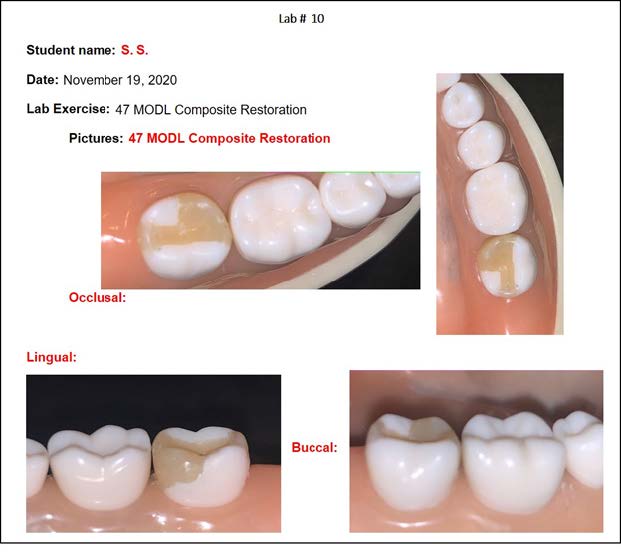
Figure 1: Example of photographs included in a student’s portfolio.
Students were asked to submit the portfolio assignments after completing their laboratory sessions. Both courses included 12 assignments in the first semester and 6 in the second. Completing each portfolio assignment took students 25–30 minutes. Each student was instructed to submit their portfolio assignments, including photographs, self-reflection and written feedback as an electronic file through the learning platform Blackboard Learn (Blackboard, Inc., Reston, Va., USA – Ed note: Blackboard, Inc. merged with Anthology in 2021) used by the University of Saskatchewan. Both course coordinators reviewed the students’ portfolio assignments for their respective courses and provided additional written feedback in the form of summative assessments within 2 weeks of submission.
The empirical literature on self-reflection and general principles of adult learning informed the portfolio assignments’ development, structure and components as a tool. Empirical research has shown that structured written reflections, reflective journaling, peer-facilitated reflections, prolonged portfolio use and group discussion increase reflective thinking, including self-reflection.19–21 Specifically, peer assessment and feedback through the use of portfolios have been found to improve academic performance and self-reflection skills.12,22,23 Principles of adult learning that informed the implementation of portfolio assignments included purposefulness, experience-based, applicability, self-direction, ownership, intrinsic motivation and problem-solving.24
Data Collection
After completing their preclinical operative courses, Y1 and Y2 students were asked to answer an anonymous online survey regarding their experience with the portfolio assignments. The survey was sent to all participants by the administrative office and was available to students for 2 weeks. A reminder email was sent after 1 week. Students’ responses were collected by Survey Monkey software (Momentive Inc., San Mateo, Calif., USA). The questionnaire consisted of 15 closed-ended questions. The first 2 questions asked for school year and whether the student had had previous experience with portfolio assignments. The remaining questions asked students to rate 13 statements related to portfolio assignments as an educational tool on a 5-point Likert scale from strongly agree (1) to strongly disagree (5). These statements allowed for outcome and process evaluations. For example, students were asked to rate whether they enjoyed the portfolio assignments (experiential outcome valuation), whether portfolio assignments improved their self-assessment skills (instrumental outcome evaluation) and whether they felt comfortable providing feedback to other students (process evaluation related to a key competent of the learning tool). Development of the survey was informed by the characteristics of the evaluations intended and those of the learning tool, especially key features. One faculty member with experience in survey development reviewed the survey. Suggested changes were made accordingly.
Data Analysis
Descriptive statistics (e.g., means ± standard deviation) were performed using SPSS software. The ratings of Y1 and Y2 dental students were compared using independent samples t test. Statistical significance was set at p < 0.05.
ResultsOf the 69 students in the 2 preclinical operative courses invited to participate in the study, 50 (72.5%) completed the survey: 25 were Y1 and 25 were Y2 students. Of the 50 students, 7 (14.0%) had previous experience with portfolio assignments in other university courses. Both Y1 and Y2 students viewed portfolio assignments positively (Table 1). Their combined ratings ranged from 1.54 to 2.42, showing that they largely agreed or strongly agreed with all the statements in the survey. Data presented in this section are aggregated because no statistically significant differences were observed between Y1 and Y2 students in any of the statements included in the survey (p ≥ 0.05).
The experiential outcome evaluation suggested that students enjoyed the portfolio assignments (mean 2.25, standard deviation 0.98) and viewed them as positive learning experiences (2.00 ± 0.90). Similarly, the instrumental outcome evaluation suggested that portfolio assignments improved learning in general (2.00 ± 0.90), engagement in the learning task (2.08 ± 0.84) and self-reflection in the form of critical self-assessment skills (2.02 ± 0.90). Portfolio assignments were also seen as beneficial in improving laboratory performance (2.42 ± 0.86) and comprehension of the content area (2.24 ± 1.02). Notably, self-reflection as the primary target outcome of portfolio assignments was highly valued by students in relation to dental education (1.70 ± 0.84) and clinical practice (1.54 ± 0.68).
The process evaluation showed that students felt fairly comfortable working independently on the portfolio assignments (2.04 ± 0.99). They also felt comfortable giving feedback to other students (2.02 ± 0.73) and receiving feedback from their peers (1.84 ± 0.68). Students also reported feeling increasingly comfortable with portfolio assignments over time (1.82 ± 0.74)
Table 1: Ratings of first-year (Y1, n = 25) and second-year (Y2, n = 25) students on a 5-point Likert scale from strongly agree (1) to strongly disagree (5), of outcomes and comfort with portfolio activities.Category
Students’ views of portfolio assignments
Y1 mean (SD)
Y2 mean (SD)
p
Y1 and Y2 mean (SD)
Outcome evaluation Experiential outcomes Enjoying portfolio assignments 2.32 (0.69) 2.19 (1.06) 0.130 2.25 (0.98) Creating a positive learning experience 2.08 (0.83) 1.92 (0.98) 0.909 2.00 (0.90) Instrumental outcomes Favouring engagement 2.32 (0.85) 1.85 (0.78) 0.818 2.08 (0.84) Improving learning through receiving and providing feedback 1.92 (0.88) 2.08 (0.93) 0.828 2.00 (0.90) Improving critical self-assessment skills 2.13 (0.74) 1.92 (1.13) 0.122 2.02 (0.90) Improving understanding of the content 2.29 (0.95) 2.19 (1.10) 0.753 2.24 (1.02) Improving performance in the laboratory 2.46 (0.88) 2.38 (0.85) 0.596 2.42 (0.86) Valuing self-reflection in dental education 1.75 (0.74) 1.65 (0.94) 0.581 1.70 (0.84) Valuing self-reflection in dental practice 1.63 (0.71) 1.46 (0.65) 0.506 1.54 (0.68) Process evaluation Comfort with portfolio activities Comfortable with independent learning 2.13 (0.95) 1.96 (1.04) 0.955 2.04 (0.99) Increased comfort with portfolio assignments over time 1.88 (0.83) 1.77 (0.65) 0.425 1.82 (0.74) Comfortable with giving feedback 2.16 (0.69) 1.88 (0.77) 0.960 2.02 (0.73) Comfortable with receiving feedback 1.92 (0.72) 1.77 (0.65) 0.985 1.84 (0.68) DiscussionThis study explored dental students’ perceptions of portfolio assignments as a means to foster self-reflection, including self-assessment, in dental education. Students’ views were sought to shed light on the potential usefulness of this learning tool to develop self-reflection, a critical skill in dental education and practice.25,26 Our data suggest that students enjoyed the portfolio assignments, found them beneficial and felt comfortable performing the main components of this learning tool. This study expands on using portfolios in dental education, especially preclinical dental education, beyond traditional learning and assessment.
Experiential outcomes (e.g., enjoyment, satisfaction) of educational interventions are as important as their instrumental outcomes (e.g., reported or measured benefits), primarily when interventions are delivered over time or involve multiple sessions. To date, most research on portfolio use has focused on its instrumental value and has provided limited insight on whether students enjoy this educational tool. Our data suggest that students do enjoy portfolio assignments, which aligns with previous research documenting that dental students appreciate and enjoy their involvement in active learning strategies in which they actively gather, process and apply dental information.27
Benefits that students attributed to portfolio assignments, such as improving general learning, engagement in the learning task and self-reflection, have been reported in previous studies, including systematic reviews.12,28 These studies have shown that the use of portfolios in undergraduate health profession education, including dental education, improved knowledge and understanding as well as self-awareness and engagement in self-reflection. However, the quality of self-reflection has seldom been assessed. Active learning, including self-reflection, has been found to enhance engagement with learning tasks and materials,29 which our study seems to support.
Although students in our study perceived that portfolio assignments improved general learning, the effects of this educational tool on understanding and performance were not equally valued. This may be because Y1 and Y2 dental students need further learning opportunities to develop dental competencies and improve their performance in preclinical settings. Evidence supporting the influence of portfolios on deep learning and practice via reflection remains scant, which highlights the need for educational approaches that promote higher levels of reflection to improve clinical performance and practice.2 Driessen and colleagues30 suggested several conditions to successfully promote reflection through portfolio use, such as well-structured portfolios, clear assessment methods and provision of new experiences and materials.
Specifically, portfolio use has been associated with increased professionalism, clinical competency and self-confidence in undergraduate dental education.28 Koole and colleagues26 found that reflection scores predicted dental students’ competencies in social dentistry and oral health promotion. Our study supports the importance of tying portfolios to individual courses to ensure students’ engagement in the learning tasks and assignment completion.15 Such a linkage may favour experiential learning, problem-solving and knowledge application, which have been described as key features of adult learning.24 In addition to these benefits, portfolios also facilitate assessments of knowledge and competencies, as their implementation is well aligned with best practices for assessment, including multiple assessments, assessments over time and multiple evaluators.15 However, the time commitment required for maintaining portfolios is a major drawback to using this tool in health profession education.12
It is worth noting that most of the available evidence about the effects of portfolio use on knowledge acquisition, skills development, self-awareness and motivation across health profession education comes from reaction-level evaluations focusing on students’ and instructors’ views and employing weak research designs (e.g., not having a comparison group).12 Thus, learning and behavioural evaluations are also needed to measure the effects of portfolio assignments on learning, skill development and levels of reflection (e.g., reporting, responding, relating, reasoning, reconstructing) to provide a comprehensive, nuanced assessment of these effects.31
In our study, students reported not only that they benefited from the portfolio assignments, but also that they felt comfortable performing the activities required to complete their portfolios, such as working independently in the assigned tasks and providing and receiving feedback. Feeling comfortable with performing a task relates to self-efficacy (perceived capability), which strongly predicts the intention to perform the task in the future and the actual performance of the task.32 This feeling might positively influence the completion of portfolio assignments or vice versa, as causality cannot be established in cross-sectional studies. Previous studies have reported that portfolio use may foster students’ ability to work independently, while peer feedback and assessment have been found to improve students’ self-image, confidence in their work, academic performance and self-reflection skills.12,22
This study has some limitations that must be acknowledged. First, it relies on data from a single institution. Thus, the applicability of our findings to other academic dental institutions will depend on similarities between contexts, students and conditions of implementation of portfolio assignments. Second, student reaction data collected through an ad-hoc survey may not be sufficient to comprehensively explore students’ views of a multicomponent, multiphase learning tool, such as portfolio assignments, including its potential impact on self-reflection. Finally, although important, reaction-level evaluations focusing on students’ experiences and perceptions are insufficient to establish the effectiveness of an educational intervention.
ConclusionStudents involved in the study enjoyed portfolio assignments and considered them beneficial in improving general learning, engagement in learning tasks and self-assessment. They also felt comfortable performing the main tasks included in the portfolio assignments, which suggests that this teaching technique may be useful and easy to apply in dental education. Our findings are likely to be applicable to similar academic contexts, learning tasks and levels of dental education (preclinical). Further research is needed to measure the effects of portfolio assignments on students’ learning and self-reflection in preclinical and clinical dental education.
THE AUTHORS
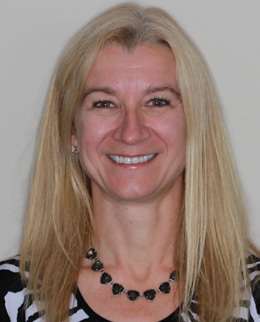
Dr. Apel is a clinical assistant professor, Faculty of Medicine and Dentistry, School of Dentistry, University of Alberta, Edmonton.
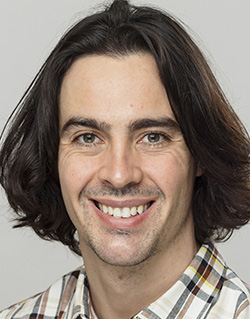
Dr. Longworth is an assistant professor, College of Dentistry, University of Saskatchewan, Saskatoon.

Dr. Wimmer is a professor, Department of Educational Policy Studies, University of Alberta, Edmonton.
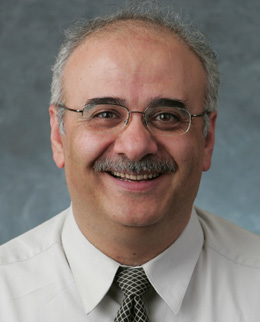
Dr. Nassar is an associate professor, Faculty of Medicine and Dentistry, School of Dentistry, University of Alberta, Edmonton.
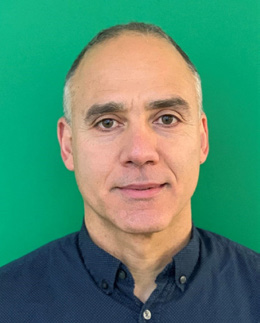
Dr. Perez is a clinical assistant professor, Faculty of Medicine and Dentistry, School of Dentistry, University of Alberta, Edmonton.
Corresponding author: Dr. Zuzanna Apel, School of Dentistry, University of Alberta, Kaye Edmonton Clinic Rm 8B.105V, Edmonton AB T6G 1Z1. Email: zuzanna@ualberta.ca
Acknowledgments: We thank the College of Dentistry at the University of Saskatchewan for supporting this research. A special thanks to the DMD students of 2023 and 2024 who participated in this study. We are also thankful for the methodological support provided by the Educational Research & Scholarship Unit at the University of Alberta School of Dentistry.
The authors have no declared financial interests.
This article has been peer reviewed.
References Williams JC, Ireland T, Warman S, Cake MA, Dymock D, Fowler E, et al. Instruments to measure the ability to self-reflect: a systematic review of evidence from workplace and educational settings including health care. Eur J Dent Educ. 2019;23(4):389-404. Mann K, Gordon J, MacLeod A. Reflection and reflective practice in health professions education: a systematic review. Adv Health Sci Educ Theory Pract. 2009;14(4):595-621. Jonas-Dwyer DRD, Abbott PV, Boyd N. First reflections: third-year dentistry students’ introduction to reflective practice. Eur J Dent Educ. 2013;17(1):e64-9. Krupp MM, Barlow PB, Kyle EJ. Developing a self-assessment tool for dental faculty to map professional growth. J Dent Educ. 2021;85(10):1596-605. Cowpe J, Plasschaert A, Harzer W, Vinkka-Puhakka H, Walmsley AD. Profile and competences for the graduating European dentist — update 2009. Eur J Dent Educ. 2010;14(4):193-202. Hendricson WD, Andrieu SC, Chadwick DG, Chmar JE, Cole JR, George MC, et al. Educational strategies associated with development of problem-solving, critical thinking, and self-directed learning. J Dent Educ. 2006;70(9):925-36. ACFD Academic Affairs Committee Task Force. ACFD educational framework for the development of competency in dental programs. Winnipeg: Association of Canadian Faculties of Dentistry; 2016. Available: https://acfd.ca/wp-content/uploads/ACFD-Educational-Framework-for-the-Development-of-Competency-in-Dental-Programs_2016.pdf (accessed 2021 June 10). Spielman AI, Fulmer T, Eisenberg ES, Alfano MC. Dentistry, nursing, and medicine: a comparison of core competencies. J Dent Educ. 2005;69(11):1257-71. Neville P. Introducing dental students to reflective practice: a dental educator’s reflections. Reflective Pract. 2018;19(2):278-90. https://doi.org/10.1080/14623943.2018.1437400 Challis M. AMEE medical education guide no.11 (revised): portfolio-based learning and assessment in medical education. Med Teach. 1999;21(4):370-86. https://doi.org/10.1080/01421599979310 Bush H, Bissell V. The evaluation of an approach to reflective learning in the undergraduate dental curriculum. Eur J Dent Educ. 2008;12(2):103-10. Buckley S, Coleman J, Davison I, Khan KS, Zamora J, Malick S, et al. The educational effects of portfolios on undergraduate student learning: a best evidence medical education (BEME) systematic review. BEME guide no. 11. Med Teach. 2009;31(4):282-98. Frank A, Gifford K. Electronic portfolio use in pediatric residency and perceived efficacy as a tool for teaching lifelong learning. BMC Med Educ. 2017;17(1):202. Lonka K, Slotte V, Halttunen M, Kurki T, Tiitinen A, Vaara L, et al. Portfolios as a learning tool in obstetrics and gynaecology undergraduate training. Med Educ. 2001;35(12):1125-30. Gadbury-Amyot CC, McCracken MS, Woldt JL, Brennan R. Implementation of portfolio assessment of student competence in two dental school populations. J Dent Educ. 2012;76(12):1559-71. Grazziotin-Soares R, Apel Z, Longworth J, Ardenghi DM. Visual portfolios in dental education: fostering learning through the sense of sight. J Dent Educ. 2021;85(Suppl. 3):2011-3. Kirkpatrick DL. The four levels of evaluation. In: Brown SM, Seidner CJ, editors. Evaluating corporate training: models and issues. Evaluation in education and human services, vol. 46. Dordrecht: Springer Netherlands; 1998. p. 95-112. Rolfe G, Freshwater D, Jasper M. Critical reflection for nursing and the helping professions a user's guide. London: Palgrave Macmillan; 2001. Lew MDN, Schmidt HG. Self-reflection and academic performance: is there a relationship? Adv Health Sci Educ Theory Pract. 2011;16(4):529-45. Asselin ME, Fain JA. Effect of reflective practice education on self-reflection, insight, and reflective thinking among experienced nurses: a pilot study. J Nurses Prof Dev. 2013;29(3):111-9. Riley-Douchet C, Wilson S. A three-step method of self-reflection using reflective journal writing. J Adv Nurs. 1997;25(5):964-8. Tricio JA, Woolford MJ, Escudier MP. Fostering dental students’ academic achievements and reflection skills through clinical peer assessment and feedback. J Dent Educ. 2016;80(8):914-23. Pai HC. An integrated model for the effects of self-reflection and clinical experiential learning on clinical nursing performance in nursing students: a longitudinal study. Nurse Educ Today. 2016;45:156-62. Knowles MS, Holton EF, Swanson RA. The adult learner: the definitive classic in adult education and human resource development. 8th ed. New York: Routledge; 2015. Greviana N, Mustika R, Soemantri D. Development of e-portfolio in undergraduate clinical dentistry: how trainees select and reflect on evidence. Eur J Dent Educ. 2020;24(2):320-7. Koole S, Vanobbergen J, De Visschere L, Aper L, Dornan T, Derese A. The influence of reflection on portfolio learning in undergraduate dental education. Eur J Dent Educ. 2013;17(1):e93-9. Perez A, Arntson C, Howey M, Amin M, Kebbe M, Ganatra S. Dental students’ perceptions of the wildcard as a novel teaching technique in case-based learning. J Dent Educ. 2022;86(10):1350-8. Ahmed MH. Reflection for the undergraduate on writing in the portfolio: where are we now and where are we going? J Adv Med Educ Prof. 2018;6(3):97-101. Yusuff KB. Does self-reflection and peer-assessment improve Saudi pharmacy students’ academic performance and metacognitive skills? Saudi Pharm J. 2015;23(3):266-75. Driessen EW, van Tartwijk J, Overeem K, Vermunt JD, van der Vleuten CPM. Conditions for successful reflective use of portfolios in undergraduate medical education. Med Educ. 2005;39(12):1230-5. Bain JD, Ballantyne R, Packer J, Mills C. Using journal writing to enhance student teachers’ reflectivity during field experience placements. Teach Teach. 1999;5(1):51-73. https://doi.org/10.1080/1354060990050104 Fishbein M, Ajzen I. Predicting and changing behavior: the reasoned action approach. London: Psychology Press; 2010.
Comments (0)